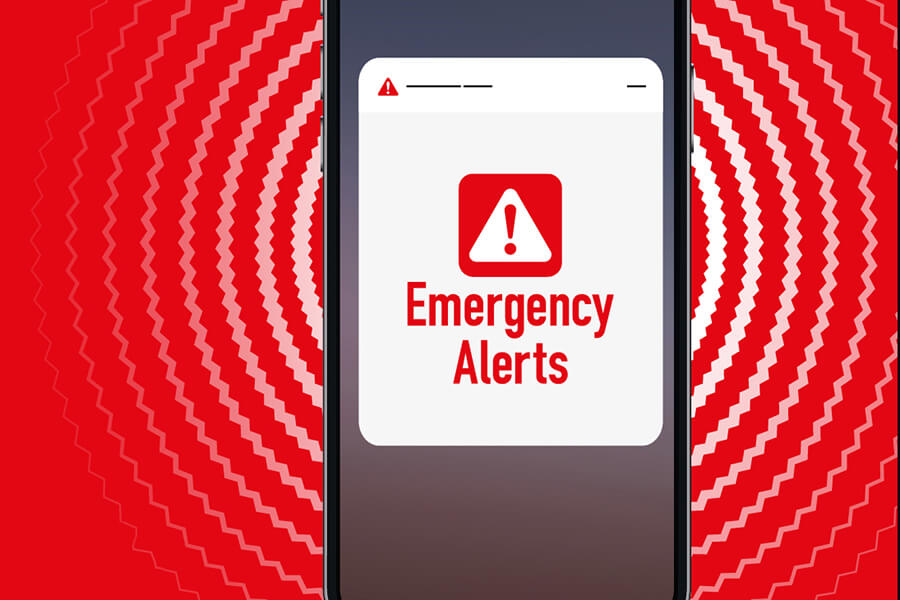In an increasingly unpredictable world, having a reliable emergency communication system is crucial for organizations of all sizes. An Emergency SMS Alert System offers a swift and effective way to disseminate critical information during emergencies, ensuring that individuals receive timely alerts when it matters most. This article explores the key features of effective emergency SMS alert solutions, their importance, and best practices for implementation.
The Importance of an Emergency SMS Alert System
An emergency SMS alert system is designed to send instant notifications to a large audience via text message. This system is vital for various scenarios, including natural disasters, security threats, health emergencies, and operational disruptions. Here are some of the primary reasons why having such a system is essential:
- Speed of Communication: In emergencies, every second counts. SMS alerts are delivered almost instantly, allowing organizations to communicate critical information rapidly.
- Widespread Reach: SMS messages can reach a large number of people simultaneously, bypassing barriers such as internet connectivity issues that may affect emails or app notifications.
- High Open Rates: Text messages have significantly higher open rates compared to emails, making them one of the most effective forms of communication during emergencies.
- Ease of Use: Most people are familiar with text messaging, which makes it easy for organizations to implement without extensive training.
- Multi-Platform Compatibility: SMS alerts can reach recipients regardless of their device, whether they use smartphones or basic mobile phones.
Key Features of Effective Emergency SMS Alert Solutions
When evaluating emergency SMS alert systems, several key features should be considered to ensure effectiveness:
1. User-Friendly Interface
A straightforward and intuitive interface is critical for both administrators and users. The system should allow for easy navigation and quick access to essential features.
- Simple Dashboard: Administrators should have a clear view of message status, recipient lists, and system alerts.
- Quick Message Creation: The ability to compose and send messages quickly is vital during emergencies.
2. Mass Notification Capabilities
The system should be capable of sending messages to a large audience simultaneously.
- Batch Messaging: Administrators should be able to send messages to multiple contacts or groups at once without delays.
- Geographic Targeting: Some emergencies may only affect specific areas. The ability to target messages based on geographic location enhances relevance and urgency.
3. Customizable Message Templates
Having pre-defined message templates can expedite the communication process.
- Emergency Templates: The system should allow administrators to create and save templates for common emergencies (e.g., fire, severe weather, lockdown).
- Personalization Options: Customizing messages with recipient names or specific details can make alerts more effective.
4. Integration with Other Systems
An effective emergency SMS alert system should integrate seamlessly with other communication and management systems.
- Incident Management Systems: Integration with incident management tools can streamline the process of sending alerts during emergencies.
- HR and CRM Systems: Linking with human resources or customer relationship management systems allows for up-to-date recipient information.
5. Two-Way Communication
While alerts are typically one-way communications, having two-way capabilities can enhance the system’s effectiveness.
- Response Options: Recipients should be able to respond to alerts, confirming their safety or providing relevant information.
- Feedback Mechanism: Gathering responses can help organizations assess the effectiveness of their alerts and make necessary adjustments.
6. Delivery Reports and Analytics
Understanding the reach and effectiveness of alerts is crucial for improving future communications.
- Delivery Confirmation: The system should provide confirmation that messages were delivered successfully to recipients.
- Analytics Dashboard: An analytics feature can help track open rates, response rates, and overall engagement, allowing for continuous improvement.
7. Multi-Language Support
In diverse communities or organizations, having multi-language support is essential.
- Language Options: The system should allow messages to be sent in multiple languages to ensure comprehension among all recipients.
- Personalization by Language: Users should be able to select their preferred language for receiving alerts.
8. Scalability
The emergency SMS alert system should be scalable to accommodate growth and changing needs.
- User Capacity: The system should be able to handle increased users during peak times, such as during a crisis or emergency drill.
- Feature Expansion: As the organization grows, the system should offer opportunities to add features or functionalities.
9. Data Security and Compliance
Data security is paramount when dealing with personal information and emergency communications.
- Encryption: The system should utilize encryption protocols to protect sensitive data during transmission.
- Compliance: Ensure that the system complies with relevant regulations, such as GDPR or HIPAA, to protect user privacy.
10. Testing and Training Capabilities
Regular testing and training are vital for ensuring that the system functions effectively during emergencies.
- Scheduled Drills: The system should allow for scheduled tests or drills to ensure that employees know how to use it effectively.
- Training Resources: Providing training materials or sessions for administrators and users can enhance familiarity and confidence.
Best Practices for Implementing an Emergency SMS Alert System
1. Assess Your Needs
Before selecting an emergency SMS alert system, assess your organization’s specific needs.
- Audience Size: Determine the number of people who need to be notified and their locations.
- Types of Emergencies: Identify the types of emergencies your organization may face and plan accordingly.
2. Choose the Right Provider
Research and select a reputable provider that specializes in emergency communication solutions.
- Reputation and Reviews: Investigate customer reviews and case studies to gauge the effectiveness of the provider’s system.
- Feature Set: Ensure that the provider offers the features and integrations that align with your organization’s needs.
3. Conduct Training
Once the system is implemented, provide comprehensive training for both administrators and users.
- Hands-On Training: Offer hands-on training sessions to familiarize staff with the system and its features.
- Regular Refreshers: Conduct periodic training sessions to keep everyone updated on any system changes.
4. Test the System Regularly
Regular testing is essential for ensuring that the system functions effectively in real emergencies.
- Scheduled Drills: Plan regular drills to assess the system’s functionality and gather feedback for improvement.
- Review Performance: After each test, review performance metrics and make necessary adjustments to improve effectiveness.
5. Gather Feedback
Encourage feedback from users to identify areas for improvement.
- Post-Alert Surveys: After sending alerts, consider conducting surveys to understand how recipients perceived the communication.
- Continuous Improvement: Use feedback to refine message templates, improve delivery processes, and enhance overall effectiveness.
Conclusion
Having an effective Emergency SMS Alert System is essential for organizations looking to enhance their emergency communication capabilities. By focusing on key features such as user-friendliness, mass notification capabilities, and robust security measures, organizations can ensure they are prepared for emergencies. Implementing best practices for training, testing, and feedback will further enhance the system’s effectiveness, ultimately contributing to a safer environment for employees and stakeholders.

